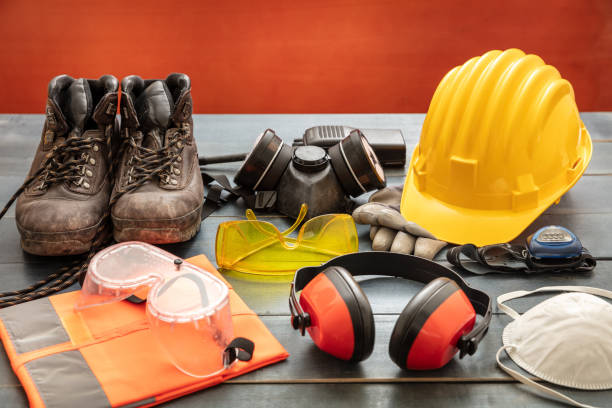In the challenging and fast-paced environment of healthcare, the safety and health of workers and patients alike are paramount. This intricate dance of care requires not only unwavering dedication but also strict adherence to health and safety practices. Understanding and implementing these practices are not just responsibilities—it's a shared duty that ensures the well-being of everyone involved.

Understanding the Duties
Every employee, regardless of their role, carries the weight of responsibility for health and safety within their workplace. It's a matter of legal and ethical importance to identify potential hazards, understand the risks, and follow established safety procedures. In healthcare settings, this becomes even more critical; a lapse in safety protocol can have far-reaching consequences.
The Role of Recognition
The first step in this duty is the recognition of potential hazards. This can range from biological risks, such as exposure to infectious diseases, to physical dangers, including slips, trips, and falls. There's also the need to consider psychological hazards, especially given the high-stress nature of healthcare work.
Understanding Safe Work Procedures
Safe work procedures (SWPs) are detailed instructions designed to minimise risk to health and safety during tasks that are identified as having inherent dangers. These procedures are not just guidelines but are frameworks around which the safety culture of an establishment is built.
Implementing Safe Work Procedures
Implementing SWPs requires a thoughtful approach that considers the unique demands and potential hazards of a healthcare setting.
-
Development: SWPs should be developed through collaboration between safety officers, HR professionals, healthcare workers, and management. This team approach ensures all aspects of a procedure are considered and addressed.
-
Communication: Procedures only work when they are effectively communicated to all staff. Utilising multiple platforms, such as staff meetings, email updates, and physical postings, ensures that everyone is informed.
-
Training: Regular training sessions help reinforce the importance of SWPs and ensure all staff are equally skilled in executing them.
-
Evaluation: Continuous evaluation of SWPs is necessary. This ensures they remain relevant and effective in the face of new challenges or when introducing new equipment or procedures.
The Role of Employees
Every healthcare worker plays an active role in maintaining workplace safety.
-
Communication: Open lines of communication enable employees to report hazards, unsafe conditions, or near misses without fear of retribution.
-
Compliance and Training: Engaging in training sessions and diligently following SWPs ensures personal safety and the safety of colleagues and patients.
-
Cultivating Safety Culture: Each employee contributes to the safety culture through their actions, attitudes, and encouragement of safe practices among peers.
The Role of Employers and Safety Officers
Employers and safety officers have a vested interest in cultivating a safe work environment. Their support structures make it possible for employees to carry out their duties efficiently.
-
Providing Resources and Support: From ensuring the availability of personal protective equipment to offering training, employers must provide the necessary resources for safety.
-
Creating a Supportive Environment: Facilitating an environment where health and safety concerns can be freely discussed and addressed is crucial. Safety officers play a key role in bridging the gap between policy and practice.
Implementing Safe Work Procedures for a Safer Healthcare Environment
Ensuring a safe and healthy workplace in healthcare settings necessitates a comprehensive approach encompassing risk assessment, adherence to required personal protective equipment (PPE) protocols, and a shared commitment to occupational health standards. Employees must take reasonable care of their own health and safety while also respecting the well-being of their colleagues. Key to this effort is the use of safety representatives to identify potential safety hazards and implement strategies to control risks effectively.
Under the Safety Act and relevant OHS (Occupational Health and Safety) Act provisions, every individual within a healthcare facility is obliged to cooperate with safety policies designed to maintain a secure working environment. This cooperation includes responsibly using eye protection, ensuring equipment is securely fastened, and wearing the correct PPE to mitigate exposure to health risks.
Additionally, employees are expected to engage with their employer and co-workers to address safety concerns proactively. It is imperative that no one recklessly interferes with or misuses anything provided for health, safety, or welfare purposes. By taking these responsibilities seriously, healthcare workers can contribute to a collective effort to foster a safe work culture that prioritises everyone's health and safety.
Key Responsibilities of Safety Representatives and Supervisors
Safety representatives and supervisors are tasked with a critical role in ensuring every individual in the healthcare environment can perform their jobs safely, thereby reducing the risk of accidents and injuries. Their duties include the development and enforcement of safe work procedures, and ensuring that all employees are trained and possess the necessary knowledge to comply with these procedures. This includes providing information on the correct use of machinery and tools, which are often sources of potential harm if misused.
Furthermore, they are responsible for ensuring that the work area is maintained to high safety standards to protect all employees. This not only covers their own safety but also mandates that no one should recklessly interfere with any task or machinery that could jeopardise the safety of others. Safety representatives and supervisors must facilitate a culture of safety where all employees feel responsible for not just their own safety, but the safety of their colleagues as well. Through rigorous training, monitoring, and providing adequate information, they help create an environment where healthcare services can be provided efficiently and safely.
Conclusion
The commitment to health and safety in healthcare is a collective effort that demands active participation from every employee. From the high-level strategies developed by HR professionals and safety officers to the daily routines of healthcare workers, every action contributes to a safer work environment. The significance of implementing and adhering to safe work procedures cannot be overstated—it's the foundation upon which the safety and health of both employees and patients rest. Together, through vigilance, training, and mutual support, we can ensure that healthcare settings are sanctuaries of care and safety.
